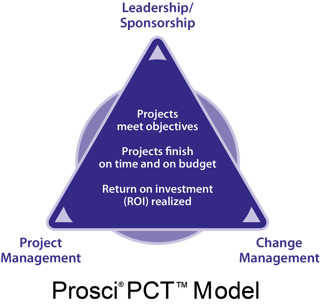Figure 1: A basic model designed to improve business performance (Right Click and open in separate tab to enlarge the image).
Businesses are always looking to better their performance by investing in an improvement programme or a series of projects that may either optimise or re-engineer their systems, tools and processes. In our previous post, we explained how three human factors (i.e. Speed of Adoption, Ultimate Utilisation and Proficiency) contributes to the return on investment (ROI) of our projects and changes. In this post, we will make use of a simple Business Performance Improvement model to identify other important precursor factors that will need to be established so that we can achieve our desired business outcomes and ROI. As these factors come before change management, we can also clearly understand how they contribute to excellent change management as well.
According to this model, we can distinctively identify three phases:1. Prioritising Inputs based on Value to Customers and Higher Order Objectives
For our company to thrive and remain relevant, we need to design and implement a strategy that delivers as much value to the customer as possible based on higher order objectives/a vision/a mission (e.g. CMC aims to spread the discipline of change management to help organisations deliver business results.). Senior Management team may do so by initiating new programmes or projects to solve inherent problems, leverage new opportunities and/or create new capabilities. These may stem from multiple points of origins. Inherent problems may be identified from process map analysis, value stream mappings, issues from incidence reports and complaints. Potential opportunities may arise from benchmarking, customer satisfaction and preferences surveys and innovation. New capabilities may be introduced through expert knowledge and strategic ideas from visionary leaders. For example, Microsoft CEO - Satya Nadella turned an outdated, irrelevant, and demoralised Microsoft around and increase the company's market capitalisation by USD250 billion by transiting from a know-it-all to a learn-it-all culture.
In Change Management, it is important that the reasons and value of the change(s) within a project are captured with intent and precision before being clearly and consistently communicated to impacted employees. When all these requirements are not worded and/or communicated clearly, impacted employees would end up having different levels of awareness and understanding of the change. In our workshops, it is a common sight to see many of our clients (which may include senior executives and managers) struggling to define and explain why their change is needed. We believe this is also the root cause which makes it difficult for participants to effectively complete the preworks before coming for our training courses.
2. Finding Real Cause(s) of Problems, Designing the Right Solution and Defining the Project and Change
To resolve problems substantially, we must first define the problem and conduct Root Cause Analysis (RCA) techniques to identify the real cause(s) and effects. Most of the business management methodologies such as Lean Six Sigma and Business Analysis involve some form of RCA techniques. We will also need to identify and implement the measures required to establish baseline performance and quantify the desired improvement or outcome.
Without knowing the real cause(s) and their metrics of measurement, it is impossible to know if our solution has worked or if the problem has been undermined temporarily. Making assumptions about what we think is the right solution may also result in people-blaming culture when things go wrong. We may blame a particular team for being unproductive when they may be overloaded due to uneven workflow variation.
At CMC, we also commonly hear from the people we worked with that there is a tendency for people-blaming when things do not go well. For instance, project managers and change managers lament being blamed for poor delivery of project outcomes despite implementing best project and change management practices.
When the problems and customers needs are clearly defined and well understood, we can identify the processes that are impacted and delineate the scope of our project. When the best solution has been identified, we can then design the new ways of working and define the people side of change. When we can see the future state with clarity, we can move on to the third phase: Ensuring Delivery.
3. Ensuring delivery

Figure 2: Prosci® Project Change Triangle (PCT™) Model
According to the Prosci® PCT™ triangle, the overall project's outcomes and ROI depends equally on leadership/sponsorship, change management and project management.
In summary, the ROI of our project depends on:
1. Choosing a project that value adds to customers and/or contributes to company's vision
2. Defining the problem and finding the Root Cause(s)
3. Identifying the right measures to inform success
4. Designing the right Solution
5. Clear Project and Change Definition
In our experience, many of our clients often mistaken project definition and change definition to be one and the same. Clients also embark on projects without understanding how the associated change in ways of working will generate measurable ROI. They wrongly rely on technical training and User Acceptance Testing as the only activities required for directly impacted staff to become proficient enough in the required new ways of working caused by the go-live implementation of the new capability. They say that in Ireland if you stop someone and ask them for directions the reply is likely to be "well if that's where you are going then I wouldn't be starting from here". Although funny this is regularly a costly mistake we see many clients making when their business changes. At CMC we can help you overcome this deficiency by working with you in a private change definition workshop.
6. Excellent and integrated Sponsorship, Project Management and Change Management
The Prosci® structured Change Management methodology empowers a change practitioner to improve the health of the project by strengthening the pillars of Sponsorship and Change Management.

Figure 3: Prosci® Best Practices Research on Change Management Effectiveness
Prosci’s research has also shown that projects with excellent change management are:
- 72% more likely to be on schedule
- 81% more likely to be on or under budget
How to get started in Change Management
If you're passionate about driving the people side of change to make things happen intentionally and intelligently, then you are destined to become a hero of change. Start off by attending our Prosci® Change Management Certification Workshop to become a Change Practitioner. We have spaces available for the November and December courses in Singapore or maybe you would prefer to qualify in Jakarta in November or Bali in January?




